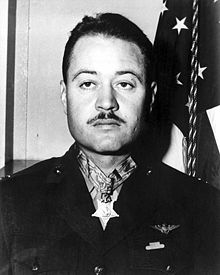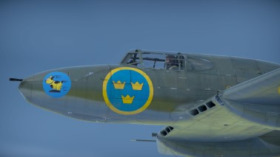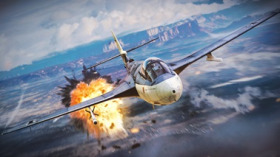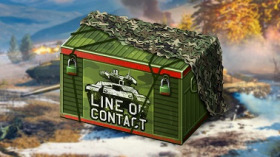
- For PC
- For MAC
- For Linux
- OS: Windows 10 (64 bit)
- Processor: Dual-Core 2.2 GHz
- Memory: 4GB
- Video Card: DirectX 11 level video card: AMD Radeon 77XX / NVIDIA GeForce GTX 660. The minimum supported resolution for the game is 720p.
- Network: Broadband Internet connection
- Hard Drive: 23.1 GB (Minimal client)
- OS: Windows 10/11 (64 bit)
- Processor: Intel Core i5 or Ryzen 5 3600 and better
- Memory: 16 GB and more
- Video Card: DirectX 11 level video card or higher and drivers: Nvidia GeForce 1060 and higher, Radeon RX 570 and higher
- Network: Broadband Internet connection
- Hard Drive: 75.9 GB (Full client)
- OS: Mac OS Big Sur 11.0 or newer
- Processor: Core i5, minimum 2.2GHz (Intel Xeon is not supported)
- Memory: 6 GB
- Video Card: Intel Iris Pro 5200 (Mac), or analog from AMD/Nvidia for Mac. Minimum supported resolution for the game is 720p with Metal support.
- Network: Broadband Internet connection
- Hard Drive: 22.1 GB (Minimal client)
- OS: Mac OS Big Sur 11.0 or newer
- Processor: Core i7 (Intel Xeon is not supported)
- Memory: 8 GB
- Video Card: Radeon Vega II or higher with Metal support.
- Network: Broadband Internet connection
- Hard Drive: 62.2 GB (Full client)
- OS: Most modern 64bit Linux distributions
- Processor: Dual-Core 2.4 GHz
- Memory: 4 GB
- Video Card: NVIDIA 660 with latest proprietary drivers (not older than 6 months) / similar AMD with latest proprietary drivers (not older than 6 months; the minimum supported resolution for the game is 720p) with Vulkan support.
- Network: Broadband Internet connection
- Hard Drive: 22.1 GB (Minimal client)
- OS: Ubuntu 20.04 64bit
- Processor: Intel Core i7
- Memory: 16 GB
- Video Card: NVIDIA 1060 with latest proprietary drivers (not older than 6 months) / similar AMD (Radeon RX 570) with latest proprietary drivers (not older than 6 months) with Vulkan support.
- Network: Broadband Internet connection
- Hard Drive: 62.2 GB (Full client)
Special 30% discount for F4U-1a Corsair from October 31 15:00 GMT (8:00 PDT) to November 1 15:00 GMT (8:00 PDT)
Colonel Gregory “Pappy” Boyington
In the blue skies overhead Bougainville Island, Papua New Guinea, the combined roar of twenty four 2000 horsepower radial engines dragged the attention of every Japanese pilot on the ground. The fighter pilots of the Imperial Japanese Navy looked up into the skies to see two dozen US Marine Corps Corsairs circling their airfield – a clear challenge to come up and fight. As the first Zeroes thundered down the dusty runway before retracting their wheels and turning to climb up to face their foes, Major Greg ‘Pappy’ Boyington dropped the wing of his fighter to lead his notorious ‘Black Sheep’ squadron down to attack.
Gregory Boyington was born on December 4th 1912 in Coeur d’Alene, Idaho. After his parents divorced, he grew up in the logging town of St.Maries, Idaho with his mother and step-father, who for his entire childhood he believed to be his biological father. In 1919, aviation showman Clyde “Upside-down Pang” Pangborn visited the area and Boyington took his first flight in a Curtiss Jenny biplane at the age of six. The experience stayed with him for his formative years. In 1926 Boyington’s family moved to Tacoma, Washington. As a High School student, two talents emerged. First, the short, stocky Boyington found a flair for wrestling, a sport which would continue to be a part of his life for decades. Second, Boyington was academically brighter than many of his peers. His mother realized this and worked at a telephone exchange to raise the money to send him to college.
In 1930, Boyington entered the University of Washington; still holding a passion for aviation which was sparked back in the Curtiss Jenny, he studied Aeronautical Engineering. Boyington’s four years at college were eventful, to say the least – he represented the university at swimming and wrestling, the latter of which he became a regional champion at, and he joined the Reserve Officer Training Corps. He spent his summers working in a gold mine to help fund his college fees and his fraternity membership. After graduating as a Bachelor of Science in Aeronautical Engineering, Boyington found work with Boeing as a draftsman and engineer specializing in technical drawings. Still keen on maintaining the ties with the military which he had fostered in the ROTC, Boyington was commissioned as a 2nd Lieutenant in the Coast Artillery Reserve in 1934, before transferring to the Volunteer Marine Corps Reserve one year later. Enthused by his military service and still passionate about aviation, Boyington was accepted as an aviation cadet in the Marines Corps Reserve in February 1936. Part of the process for joining full time military service involved the submission of the applicant’s birth certificate; it was only now that Boyington learnt that his parents had divorced when he was very young and that he had not grown up with his biological father. Nonetheless, Boyington adopted his father’s surname for the rest of his life. It was during his early military career that Boyington began to acquire a reputation as a hard drinker and a brawler, themes which would continue to appear throughout his life.
In March 1937 Boyington successfully completed flying training and was awarded pilot’s wings. In July 1937 Boyington was commissioned as an officer in the regular USMC; as a marine corps officer Boyington was now a soldier as well as an aviator, but despite his reservist background he showed little interest in the infantry based areas of his training where he performed poorly; his results were compounded by his continuing incidents of drinking and fighting, now joined by a reputation for not paying his loans and debts. However, as a pilot he excelled and stood out from his peer group in the 2nd Marine Air Group at Naval Air Station San Diego, California. By 1940 he had been promoted to 1st Lieutenant and was employed as a flying instructor at Naval Air Station Pensacola, Florida. However, whilst Boyington excelled in the air, his discipline record on the ground continued to decline; drinking and brawling problems came to a head in January 1941 when he struck a more senior officer.
With a bad reputation over his head, Boyington leapt on the chance for a fresh start: in August 1941 he resigned from the USMC to accept a position with CAMCO – the Central Aircraft Manufacturing Company. It was CAMCO who supplied pilots to the 1st American Volunteer Group; the AVG would go on to be known as the legendary ‘Flying Tigers.’ With his previous experience Boyington was taken on as a Flight Leader, flying Curtiss P40s against Japanese forces in support of the Chinese military. Boyington shot down his first aircraft, a Ki-27 ‘Nate’, on January 29th 1942. Within the next two weeks he had shot down a further two Japanese aircraft and had been promoted to squadron second in command. However, the same combination of extraordinary flying skills in the air and alcohol and poor discipline on the ground now began to re-emerge. Incidents included reporting for duty badly hungover and embarrassing AVG commander Claire Chennault at an official function, but culminated in Boyington leading a flight of five P40s off course to then run out of fuel and crash land in a mountain range; only two of the fighters could be flown out after field repairs. After crashing a P40 on take off from Loiwing, further accusations of alcohol influence whilst on duty left to Boyington leaving the AVG in April 1942. He claimed six aerial victories during his time with the AVG, although some historians dispute this figure with counter claims of the number being as low as two.
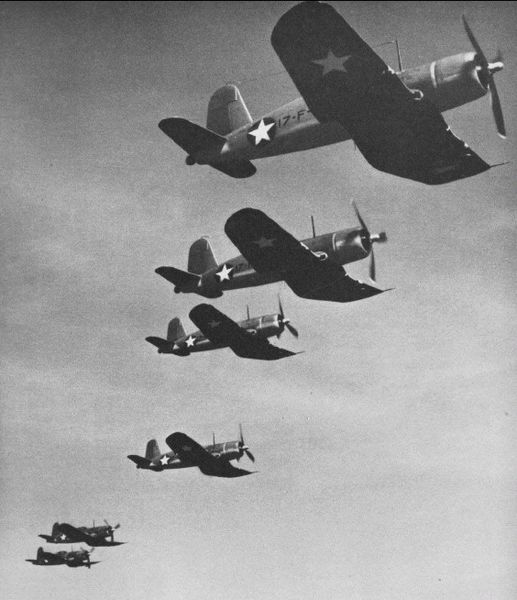 Despite the dark cloud which hung over his career with the US Marine Corps, the US military was in desperate need of experienced pilots and so Boyington was accepted into the USMC Reserve in September 1942. Promoted to Major, he was assigned to VMF-121 as Executive Officer and flew operationally during the Guadalcanal campaign. However, after breaking his leg in the Spring of 1943 he was removed from the front line and assigned to an administrative post. It was in the summer of 1943 that Boyington assembled a team of pilots together to re-form VMF-214. Despite later exaggerations from the media, Boyington’s squadron was not a ‘dirty dozen’ made up of misfits and discipline problems; he merely formed the squadron out of a combination of experienced veterans, recently qualified pilots and replacements from other units. This hastily assembled unit then managed to acquire a number of damaged and heavily used aircraft. The pilots were keen to be known as ‘Boyington’s Bastards’ – reflected on the squadron badge of VMF-214 even to this day by the black stripe of illegitimacy – but the more newspaper friendly nickname of ‘The Black Sheep’ was instead adopted. A good seven or eight years older than most of his pilots, Boyington was soon nicknamed ‘Pappy.’ Equipped with the Chance-Vought F4U Corsair, the Black Sheep went into combat in September 1943 in the Russell Islands in the Central Province of the Soloman Islands. Boyington himself shot down 14 Japanese aircraft in 32 days, including 5 kills on September 19th to make ‘Ace in a day.’
Despite the dark cloud which hung over his career with the US Marine Corps, the US military was in desperate need of experienced pilots and so Boyington was accepted into the USMC Reserve in September 1942. Promoted to Major, he was assigned to VMF-121 as Executive Officer and flew operationally during the Guadalcanal campaign. However, after breaking his leg in the Spring of 1943 he was removed from the front line and assigned to an administrative post. It was in the summer of 1943 that Boyington assembled a team of pilots together to re-form VMF-214. Despite later exaggerations from the media, Boyington’s squadron was not a ‘dirty dozen’ made up of misfits and discipline problems; he merely formed the squadron out of a combination of experienced veterans, recently qualified pilots and replacements from other units. This hastily assembled unit then managed to acquire a number of damaged and heavily used aircraft. The pilots were keen to be known as ‘Boyington’s Bastards’ – reflected on the squadron badge of VMF-214 even to this day by the black stripe of illegitimacy – but the more newspaper friendly nickname of ‘The Black Sheep’ was instead adopted. A good seven or eight years older than most of his pilots, Boyington was soon nicknamed ‘Pappy.’ Equipped with the Chance-Vought F4U Corsair, the Black Sheep went into combat in September 1943 in the Russell Islands in the Central Province of the Soloman Islands. Boyington himself shot down 14 Japanese aircraft in 32 days, including 5 kills on September 19th to make ‘Ace in a day.’
In addition to their aerial exploits the Black Sheep built up a fearsome reputation against ground and amphibious forces, attacking enemy airfields and installations and sinking Japanese shipping and troop transports. On October 17th, Boyington led 24 Corsairs to circle over the Japanese airfield at Kahili on Bougainville Island, daring the 60 enemy aircraft based there to accept his challenge. In the resulting combat, the Black Sheep claimed twenty enemy aircraft destroyed without loss. Involved in continuous flying operations throughout the winter, Boyington’s combat career culminated with his final aerial victories on January 3rd 1944, when he led a 48 aircraft sweep against Japanese forces at Rabaul. Boyington was seen shooting down his 26th aircraft, but then disappeared within a furious dogfight. He did not return to base and was declared Missing In Action.
Unknown to his comrades for many months, Boyington had been shot down by a Japanese fighter and had been recovered by an enemy submarine. He spent the next twenty months in Japanese Prisoner Of War camps until he was finally released in August 1945. Promoted to Lieutenant Colonel after arriving back in the United States, he was then presented with the nation’s highest award for valour: The Congressional Medal of Honor. He was also awarded the Navy Cross, and retrospectively claimed a further two kills in addition to the 26th victory which had been witnessed on that last flight over Rabaul. Unfortunately, his drinking problems again came to the fore during a victory bond tour; he was retired from the USMC for medical reasons in 1947 with the rank of Colonel.
Alcohol continued to plague Boyington for the rest of his life as he transitioned through a succession of civilian jobs and marriages. After writing his autobiography, “Baa Baa Black Sheep”, a highly fictitious account of his combat career and the exploits of his squadron was dramatized in the 1976 TV series of the same name. A heavy smoker, Gregory “Pappy” Boyington passed away in his sleep in January 1988, possibly due to complications arising from cancer. He is buried at Arlington National Cemetery. After inviting national outrage when a student senate voted against a memorial in Boyington’s honour at the Univeristy of Washington in 2006, a Medal of Honor memorial was erected at Boyington’s former university in 2009. The United States Marine Corps continue to honour and hold Boyington in the highest regard as one of their finest aviators to this day.
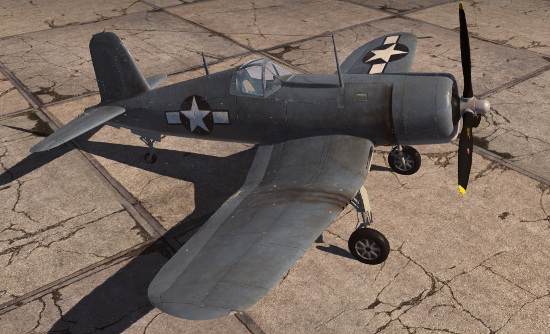
The aircraft – F4U-1A 18086 is an iconic aircraft of the United States Marines Corps. Seen in a collection of publicity photos with Boyington in November 1943, the aircraft depicts twenty of his aerial victories, and either the name ‘Lulubelle’ or ‘Lucybelle’ – Boyington himself recalls it to be the former. This aircraft was, however, never flown in combat by Boyington and was used only for propaganda. Boyington, like every other member of the Black Sheep, flew whichever Corsair was available and in good working order on the day and did personalize his aircraft in any way.
The author
 Mark Barber, War Thunder Historical Consultant
Mark Barber, War Thunder Historical Consultant
Mark Barber is a pilot in the British Royal Navy's Fleet Air Arm. His first book was published by Osprey Publishing in 2008; subsequently, he has written several more titles for Osprey and has also published articles for several magazines, including the UK's top selling aviation magazine 'FlyPast'. His main areas of interest are British Naval Aviation in the First and Second World Wars and RAF Fighter Command in the Second World War. He currently works with Gaijin as a Historical Consultant, helping to run the Historical Section of the War Thunder forums and heading up the Ace of the Month series.
